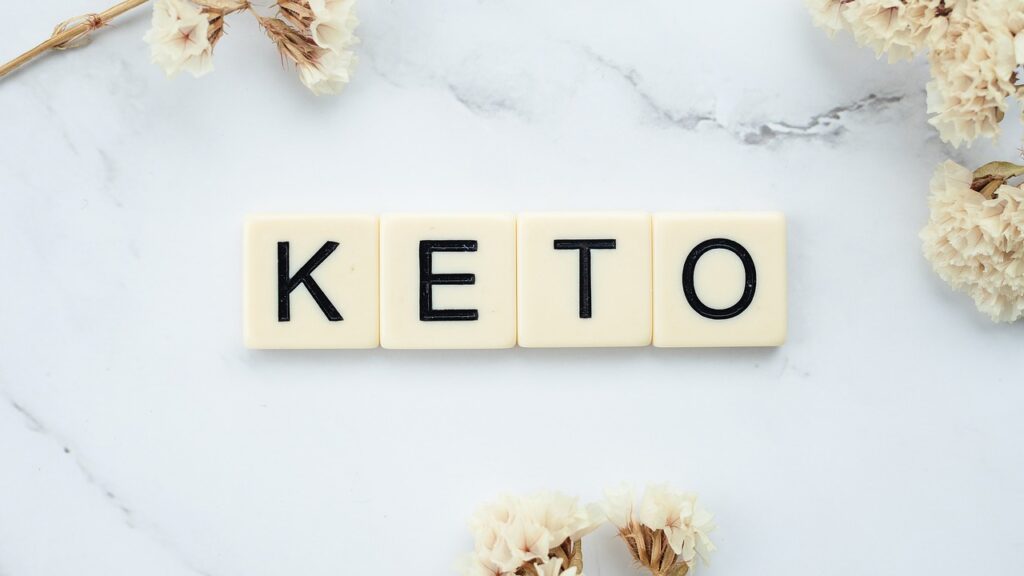Keto and Intermittent Fasting Results 1 Month
Embarking on a health journey can bring both excitement and challenges. It takes dedication, discipline, and perseverance to reach your desired outcome. One of the most popular and effective ways to start a health journey is by following the keto and intermittent fasting diets. These diets have proven to bring remarkable results in just one month.
Keto And Intermittent Fasting: What You Need To Know
Before starting the 30-day challenge, it’s important to understand the basics of the keto and intermittent fasting diets. The keto diet involves reducing your carbohydrate intake and increasing your fat intake to induce a state of ketosis where your body burns fat for energy. This diet is known to help with weight loss, improve blood sugar levels, and increase energy levels.
Intermittent fasting involves alternating periods of fasting and eating. This can range from skipping a meal or limiting yourself to an 8-hour eating window within a 24-hour period. Intermittent fasting has been known to improve insulin sensitivity, aid in weight loss, and promote cellular repair.


Combining these two diets can create a powerful tool for improving overall health and achieving weight loss goals. The 30-day challenge involves following both diets strictly for 30 days, resulting in significant transformations in the body.
In conclusion, the keto and intermittent fasting diets can bring remarkable results in just one month. It’s essential to understand the fundamentals of these diets before starting the challenge. With dedication and discipline, embarking on the 30-day challenge can transform both the body and mind.
The Science Behind Keto And Intermittent Fasting
The keto and intermittent fasting diets have gained popularity due to their effectiveness in promoting weight loss and overall health improvement. But what makes these diets work? Here’s a breakdown of the science behind them:
How The Ketogenic Diet Works
The ketogenic diet is based on the principle of reducing carbohydrate intake and increasing consumption of healthy fats to trigger ketosis. Ketosis is the state where the body switches from using glucose as the primary source of energy to burning fat for energy. During this process, ketones are formed in the liver as a byproduct of fat metabolism. These ketones are then used as an energy source for the brain and body, resulting in weight loss, reduced inflammation, and improved cognitive function.
Intermittent Fasting: The Health Benefits
Intermittent fasting involves alternating periods of fasting and eating. This approach helps to reduce caloric intake, resulting in weight loss. Intermittent fasting triggers autophagy, a process that promotes cellular repair and clean-up, reducing the risk of chronic diseases. Fasting has also been shown to improve insulin sensitivity, reduce inflammation, and promote longevity.
Combining the ketogenic diet and intermittent fasting can amplify their benefits. During fasting, the body enters a state of ketosis, which can enhance the process of fat burning. The combination of these two diets can also increase energy levels, reduce cravings, and improve mental clarity.
In conclusion, understanding the science behind the ketogenic diet and intermittent fasting is essential when embarking on the 30-day challenge. These diets work by promoting ketosis, cellular repair, and insulin sensitivity, resulting in weight loss and overall health improvement. When combined, they can enhance their benefits and create a powerful tool for achieving health goals.
1 Month Transformation Journey
The keto and intermittent fasting diets are popular for their effectiveness in promoting weight loss and overall health improvement. The science behind these diets is based on reducing carbohydrate intake and increasing consumption of healthy fats to trigger ketosis. Ketosis is the state where the body switches from using glucose as the primary source of energy to burning fat for energy, resulting in weight loss, reduced inflammation, and improved cognitive function.


During a one-month journey, the individual experienced body transformation beyond the number on the scale. With abs showing, arms more toned, and legs leaner, the person felt confident about their bodily transformation. Combining the ketogenic diet and intermittent fasting amplifies their benefits and enhances the process of fat burning. The combination of these two diets also increases energy levels, reduces cravings, and improves mental clarity.
My Personal Experience With Keto And Intermittent Fasting
During the one-month challenge, the individual experienced personal transformation in their body. They found the ketogenic diet and intermittent fasting to be effective in reducing their cravings and hunger, leading to weight loss, toned muscles, and improved energy levels. Moreover, the individual noticed improved cognitive function and reduced inflammation.
Challenges I Faced And How I Overcame Them
The individual faced some challenges during the one-month journey of keto and intermittent fasting. They experienced an initial phase of headaches, low energy levels, and difficulty sleeping in the first week. However, by the second week, they overcame these symptoms, and their body adapted to the new diet plan. They coped by increasing their water intake, electrolytes, and taking time to rest. Keeping focus on the end goal of improved health and a transformed body motivated them to overcome these hurdles.
In conclusion, the keto and intermittent fasting diets are effective in promoting weight loss and overall health improvement. The science behind these diets is based on reducing carbohydrate intake and increasing consumption of healthy fats to trigger ketosis. Personal experience and challenges faced during the one-month challenge provide valuable insights to individuals looking to undertake this journey.
Tips For Successful Keto And Intermittent Fasting
The combination of keto and intermittent fasting has proven to be an effective way to improve overall health and achieve weight loss. However, individuals must have a clear strategy in place to ensure a successful journey. Below are some tips that can help individuals successfully complete a keto and intermittent fasting challenge.
Meal Planning And Preparation
Meal planning is essential to ensure individuals meet their required macronutrient intake while on the keto diet. A proper meal plan will help individuals consume enough healthy fats, adequate protein, and minimal carbs. Meal preparation makes it easier for individuals to avoid fast-food options and stick to their diet plans. Preparing meals in advance can also make it easier for individuals to monitor their calorie intake and avoid overeating.
Tracking Your Progress
Tracking progress can be helpful in staying motivated and tracking success. Individuals can track their progress by monitoring their weight, taking pictures of themselves, and keeping a record of their meals. Additionally, tracking progress can help individuals identify any areas where they need to make changes or adjustments to their meal plans or exercise routines.
In summary, individuals who embark on a keto and intermittent fasting journey can improve overall health and achieve weight loss. By implementing proper meal planning and preparation and tracking progress, individuals will set themselves up for success and reach their goals.
The Incredible Results Achieved
In just one month, the combination of Keto and intermittent fasting led to incredible results for individuals. These results went beyond weight loss and include changes in body composition, improved energy levels, and mental clarity.
Weight Loss And Body Composition Changes
Through Keto and intermittent fasting, individuals can reduce overall calorie intake and increase fat burning, leading to weight loss. Implementing a proper meal plan and preparation can ensure individuals consume enough healthy fats, sufficient proteins, and minimal carbohydrates. Meal preparation can help avoid fast-food options and assist in sticking to the diet plan. Planning meals in advance can also make it easier for individuals to monitor their calorie intake and avoid overeating. Following the diet plan correctly can lead to visible fat loss from different body parts leading to a leaner and toned physique.
Improved Energy Levels And Mental Clarity
Besides losing weight, individuals have reported improved energy levels and mental clarity through the Keto and intermittent fasting protocols. The proper fat intake from the Keto diet ensures body fuel from fat instead of glucose, resulting in a sustainable and improved energy level throughout the day. Intermittent Fasting also helps clear brain fog and boost mental focus by regulating blood glucose levels.


Embarking on the Keto and intermittent fasting journey requires a clear strategy in place to ensure a successful endeavor. By implementing the tips of proper meal planning and preparation and tracking progress, individuals can set themselves up for success and reach their goals.
Challenges And Risks Of Keto And Intermittent Fasting
Individuals who want to embark on the Keto and intermittent fasting journey should know the potential risks and challenges that come with it. Combining these two protocols can be challenging if not done properly and requires discipline, planning, and dedication.
Potential Side Effects
One of the potential side effects of Keto and intermittent fasting is the “keto flu.” It is a common experience where individuals may experience symptoms such as headaches, nausea, and irritability due to their body adjusting to the new diet and fasting schedule. Another possible side effect is constipation, especially in the initial stages of the diet plan. Individuals may also experience muscle loss if they don’t consume sufficient protein or resistance train during their fasting period.
How To Address Them
To address these potential side effects, individuals can opt for a gradual transition into these protocols. Rather than immediately shifting to a full-time fasting schedule, individuals can start with a few hours of fasting and gradually build up to a more intermittent fasting schedule. Consuming enough healthy fats and proteins can help avoid muscle loss, and fiber-rich foods can prevent constipation. Staying hydrated can also help alleviate headaches and other symptoms.
Additionally, consulting a healthcare provider or a registered dietitian before starting the Keto and intermittent fasting program is highly recommended. Those with underlying medical conditions should consult with their doctor for proper guidance on how to adjust medications and the diet plan.
In conclusion, combining Keto and intermittent fasting can lead to incredible results for individuals, but it also comes with potential risks and challenges. With proper planning and discipline, individuals can address the potential side effects and achieve their desired results efficiently.
Challenges And Risks Of Keto And Intermittent Fasting
Combining Keto and intermittent fasting can be a challenging journey that requires planning, discipline, and dedication. Individuals need to be aware of the potential risks and challenges that come with these protocols.
Potential Side Effects
One of the potential side effects of combining Keto and intermittent fasting is the “keto flu.” Individuals may experience symptoms such as headaches, nausea, and irritability as their body adjusts to the new diet and fasting schedule. Constipation is another possible side effect, particularly during the initial stages of the diet. Muscle loss can occur if an individual doesn’t consume enough protein or resistance train during their fast.
How To Address Them
To address these potential side effects, a gradual transition into these protocols is recommended. Individuals can start with shorter fasting periods and gradually increase until they reach a more sustained approach. Consuming sufficient healthy fats and proteins can help prevent muscle loss, while incorporating fiber-rich foods can alleviate constipation. Staying hydrated can also help alleviate headaches and other symptoms.
Individuals should consult with their healthcare provider or registered dietitian before starting the Keto and intermittent fasting program. Those with underlying medical conditions need to seek proper guidance on how to adjust medications and the diet plan.
Common Mistakes To Avoid During The Journey
Misconceptions About Keto And Intermittent Fasting
One of the common misconceptions is that the diet plans are a shortcut to weight-loss and optimal health. While they can bring results, it is essential to approach them with a balanced, sustainable mindset. Another common mistake is not reading ingredient labels and consuming foods that may contain hidden sugars or carbohydrates, leading to disrupted ketosis.
How To Maintain A Balanced And Sustainable Approach
The key to maintaining a balanced and sustainable approach is to understand the principles of Keto and intermittent fasting thoroughly. It is critical to consume enough healthy fats, proteins, and fiber-rich foods to support optimal health. Planning meals, keeping hydration levels up, and taking breaks from fasting when necessary play a crucial role in maintaining a sustainable approach to these protocols.


In conclusion, understanding the challenges, potential risks, misconceptions, and common mistakes of combining Keto and intermittent fasting is vital for a successful journey. It is essential to approach these protocols with a balanced and sustainable mindset and seek guidance from healthcare professionals when necessary.
Moving Forward: Incorporating Keto And Intermittent Fasting As A Lifestyle
Maintaining Long-term Results
Incorporating Keto and intermittent fasting into a long-term lifestyle requires commitment and consistency. Continuing to assess and adjust the approach is crucial for maintaining weight loss and optimal health. It is essential to keep in mind that the initial motivation of weight loss transforms into a lifestyle mindset that focuses on overall health and wellbeing.
Regular check-ins with a healthcare provider or a registered dietitian can provide valuable insight into maintaining healthy ranges and addressing any potential health concerns. Gradually increasing exercise levels and resistance training can help build and maintain muscle mass, which is critical for a healthy metabolism.
Finding Balance And Flexibility
Finding balance and flexibility in the Keto and intermittent fasting approach is crucial for a sustainable lifestyle. While it is essential to stick to a dietary plan, it is also necessary to incorporate occasional indulgences and cheat meals to maintain motivation and prevent burnout.
Planning ahead and preparing meals in advance can help reduce the stress of daily decision-making. Sticking to nutrient-dense, whole foods and incorporating a variety of fiber-rich vegetables, fruits, and healthy fats can provide the necessary vitamins and minerals for overall health.
In conclusion, incorporating Keto and intermittent fasting as a sustainable lifestyle requires discipline, dedication, and a balanced approach. Maintaining regular check-ins and finding flexibility in the approach can help with long-term success. As with any dietary change, consulting with healthcare providers can provide guidance and ensure that the approach is safe and effective for individual needs.
Moving Forward: Incorporating Keto And Intermittent Fasting As A Lifestyle
Maintaining Long-term Results
Incorporating Keto and intermittent fasting into a long-term lifestyle requires commitment and consistency. Gradually increasing exercise levels and resistance training can help build and maintain muscle mass, which is critical for a healthy metabolism. It is essential to keep in mind that the initial motivation of weight loss transforms into a lifestyle mindset that focuses on overall health and wellbeing. Regular check-ins with a healthcare provider or a registered dietitian can provide valuable insight into maintaining healthy ranges and addressing any potential health concerns.
Finding Balance And Flexibility
A balance of sticking to a dietary plan and incorporating occasional indulgences and cheat meals is necessary for a sustainable lifestyle. Planning ahead and preparing meals in advance can help reduce the stress of daily decision-making. Sticking to nutrient-dense, whole foods and incorporating a variety of fiber-rich vegetables, fruits, and healthy fats can provide the necessary vitamins and minerals for overall health.
Reflection On My Transformation Journey
Reflecting on the transformation journey, it is clear that Keto and intermittent fasting have been valuable lifestyle changes. The experiment in health discipline and routine provided a deeper understanding of nutrition and the dependency on carbs. The ease of cooking and the appreciation for food were also significant takeaways.
Final Thoughts And Recommendations For Those Interested In Trying Keto And Intermittent Fasting
In conclusion, incorporating Keto and intermittent fasting as a sustainable lifestyle requires discipline, dedication, and a balanced approach. Maintaining regular check-ins and finding flexibility in the approach can help with long-term success. As with any dietary change, consulting with healthcare providers can provide guidance and ensure that the approach is safe and effective for individual needs. For those interested in trying Keto and intermittent fasting, it is recommended to start slow and gradually work towards a sustainable lifestyle that is both enjoyable and effective.


Q: What is a Keto diet?
A: A Keto diet is an eating plan that focuses on foods that provide a lot of healthy fats, adequate amounts of protein, and very few carbohydrates.
Q: What are the benefits of a Keto diet?
A: The benefits of a Keto diet include weight loss, improved heart health, and the potential to manage conditions such as acne.
Q: Are there any risks associated with a Keto diet?
A: Yes, there may be some risks associated with a Keto diet, such as a potential decrease in physical performance and the risk of nutrient deficiencies.
Q: What is intermittent fasting?
A: Intermittent fasting is an eating pattern that involves periods of fasting followed by periods of eating.
Q: What are the benefits of intermittent fasting?
A: The benefits of intermittent fasting may include weight loss, improved blood sugar control, and reduced inflammation in the body.
Q: Can you combine a Keto diet and intermittent fasting?
A: Yes, it is possible to combine a Keto diet and intermittent fasting. This may further enhance the benefits of both approaches.
Q: What kind of results can you expect after one month of Keto and intermittent fasting?
A: After one month of Keto and intermittent fasting, you may see improvements in weight loss, energy levels, and overall health. However, results may vary depending on individual factors such as age, gender, and activity level.
Q: What is a good meal plan for a lower carb lifestyle?
A: A good meal plan for a lower carb lifestyle may include foods such as lean proteins, healthy fats, and plenty of non-starchy vegetables. It is important to work with a healthcare professional or registered dietitian to develop a meal plan that is tailored to your individual needs and goals.



Are you looking for delicious and healthy dessert ideas? Look no further than scrumptioussugarfree.com! The owner and writer of this blog is dedicated to creating mouth-watering desserts without any added sugars. From chocolate cake to fruity sorbets, every recipe is carefully crafted to satisfy your sweet tooth while keeping your health in mind. Follow scrumptioussugarfree.com on social media for daily inspiration, and join the community of health-conscious dessert lovers today!
